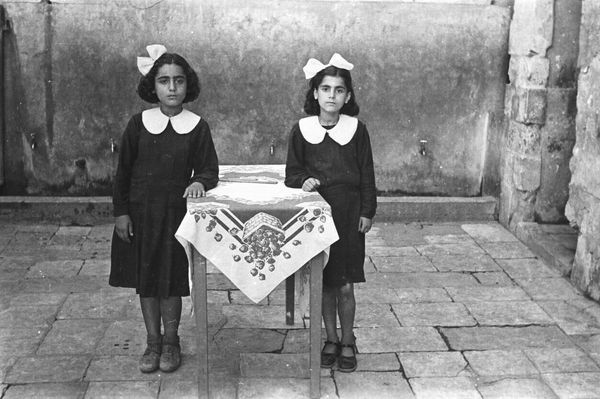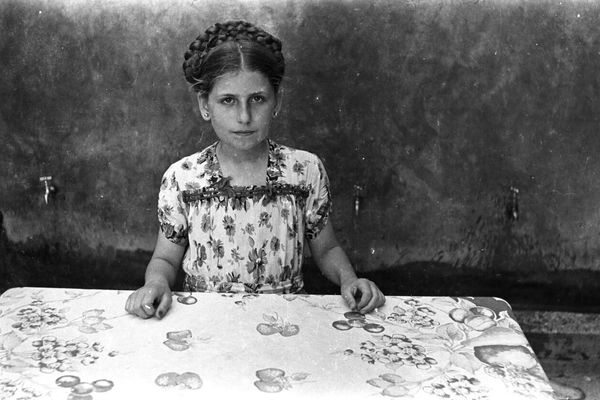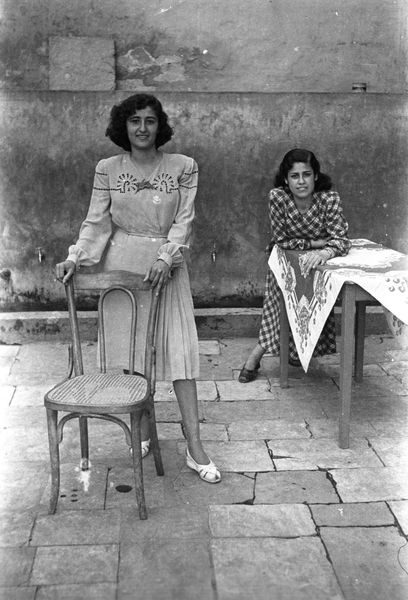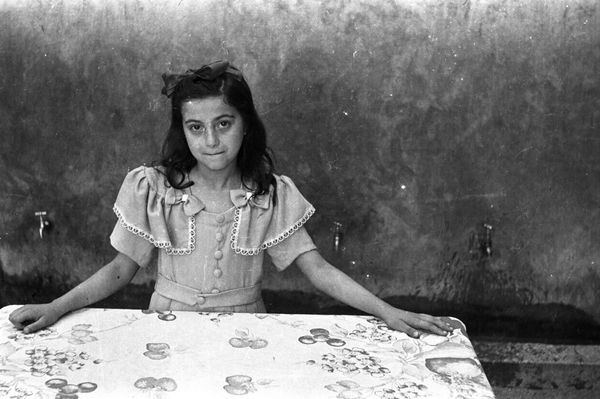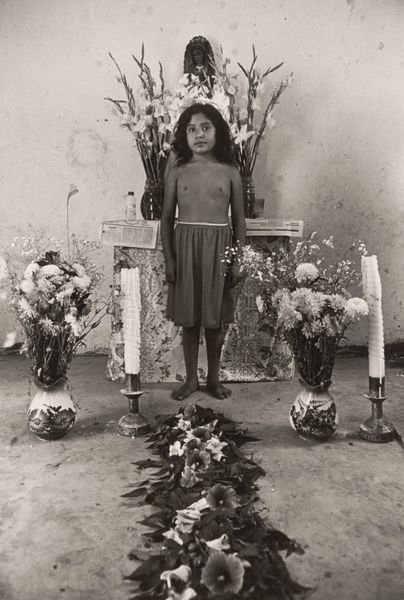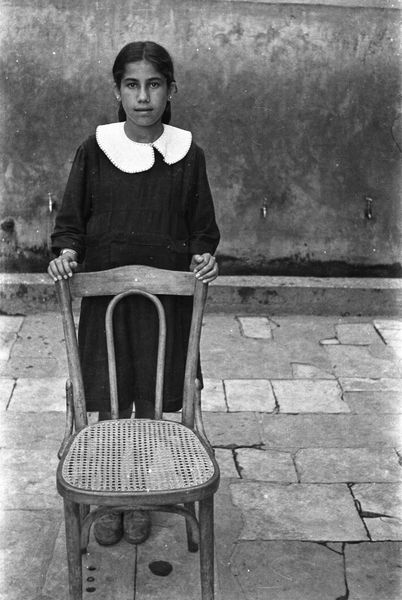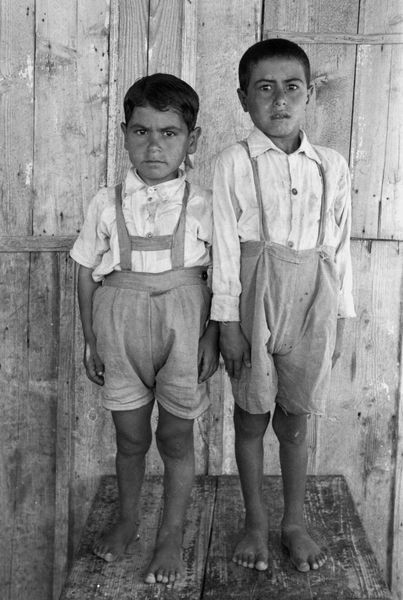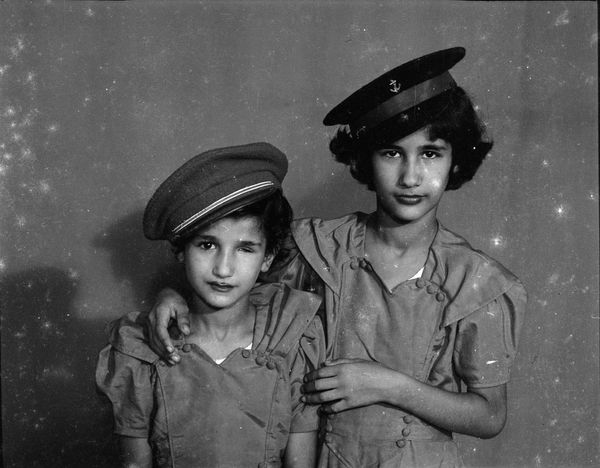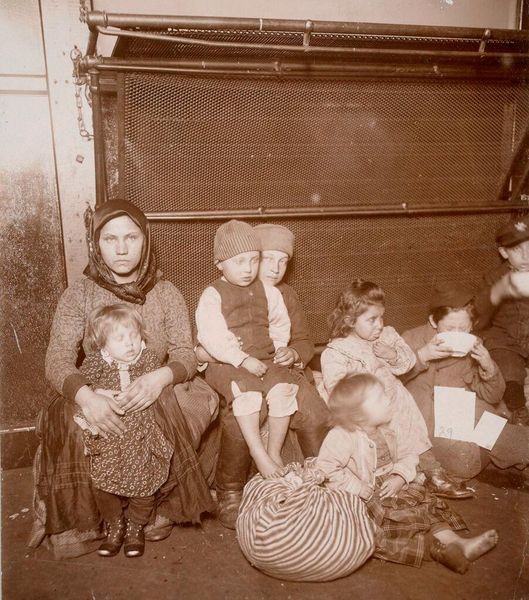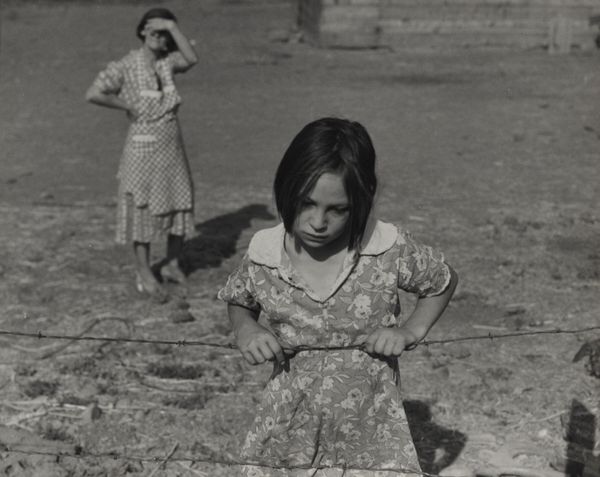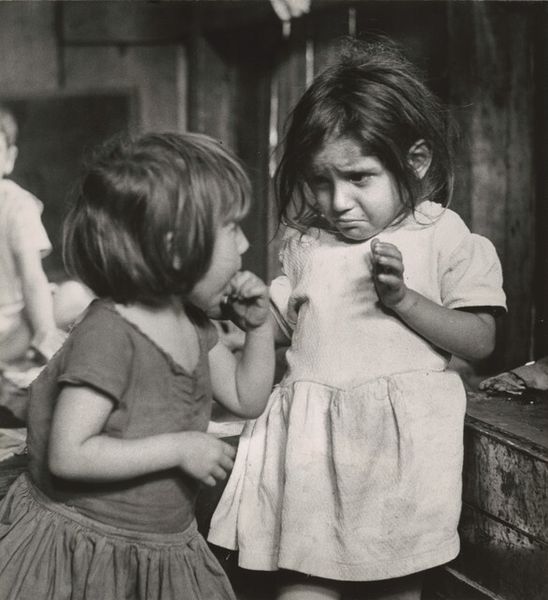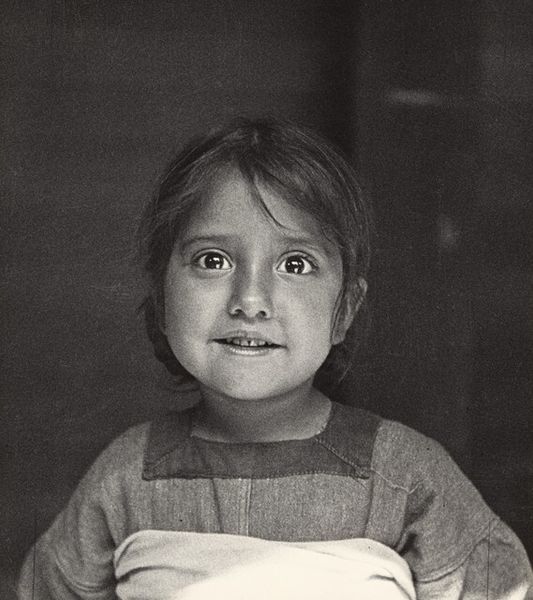
Students of Aisha Om el Mo’minin School for Girls. Ibtissam Hashisho (right) and a school friend. School courtyard, Saida, Lebanon, 1948-49. Hashem el Madani 2007
0:00
0:00
Dimensions: image: 150 x 227 mm
Copyright: © Akram Zaatari, courtesy Hashem el Madani and Arab Image Foundation, Beirut | CC-BY-NC-ND 4.0 DEED, Photo: Tate
Curator: This photograph by Akram Zaatari, taken from Hashem el Madani's series in 1948-49, captures two students from Aisha Om el Mo’minin School for Girls in Saida, Lebanon. It's a silver gelatin print. Editor: It's striking how the formality of their pose contrasts with the worn texture of the courtyard. There’s a sense of quiet resilience about it. Curator: Absolutely. Madani's framing isolates the girls and that fruit-laden tablecloth against the rough wall, emphasizing a cultural intersection. Editor: Yes, the fruit tablecloth almost feels like a still life element introduced into a portrait, disrupting the implied context. The symbolism feels both personal and broadly cultural. Curator: Madani was capturing a very specific moment in Lebanese society, documenting its evolving identity through everyday portraiture. Editor: I appreciate the way the photograph makes us contemplate the girls' futures, hinting at the possibilities and constraints their society might impose. Curator: A poignant reminder of shared histories, wouldn’t you say? Editor: Indeed. A glimpse into a past that still speaks volumes.
Comments
tate 6 months ago
⋮
http://www.tate.org.uk/art/artworks/zaatari-students-of-aisha-om-el-mominin-school-for-girls-ibtissam-hashisho-right-and-a-p79429
Join the conversation
Join millions of artists and users on Artera today and experience the ultimate creative platform.
tate 6 months ago
⋮
“The school was headed by Nafissa Kotob, who was the aunt of my friend Sami Kotob. She would ask me to photograph the students twice a year. I would request them to bring me a chair and a table in order to articulate the space of the picture - this was especially important when more than one person was in the frame. Girls from wealthy families purchased their uniforms at the beginning of the year, whereas others would often wait until the middle of the year.” Gallery label, June 2011
